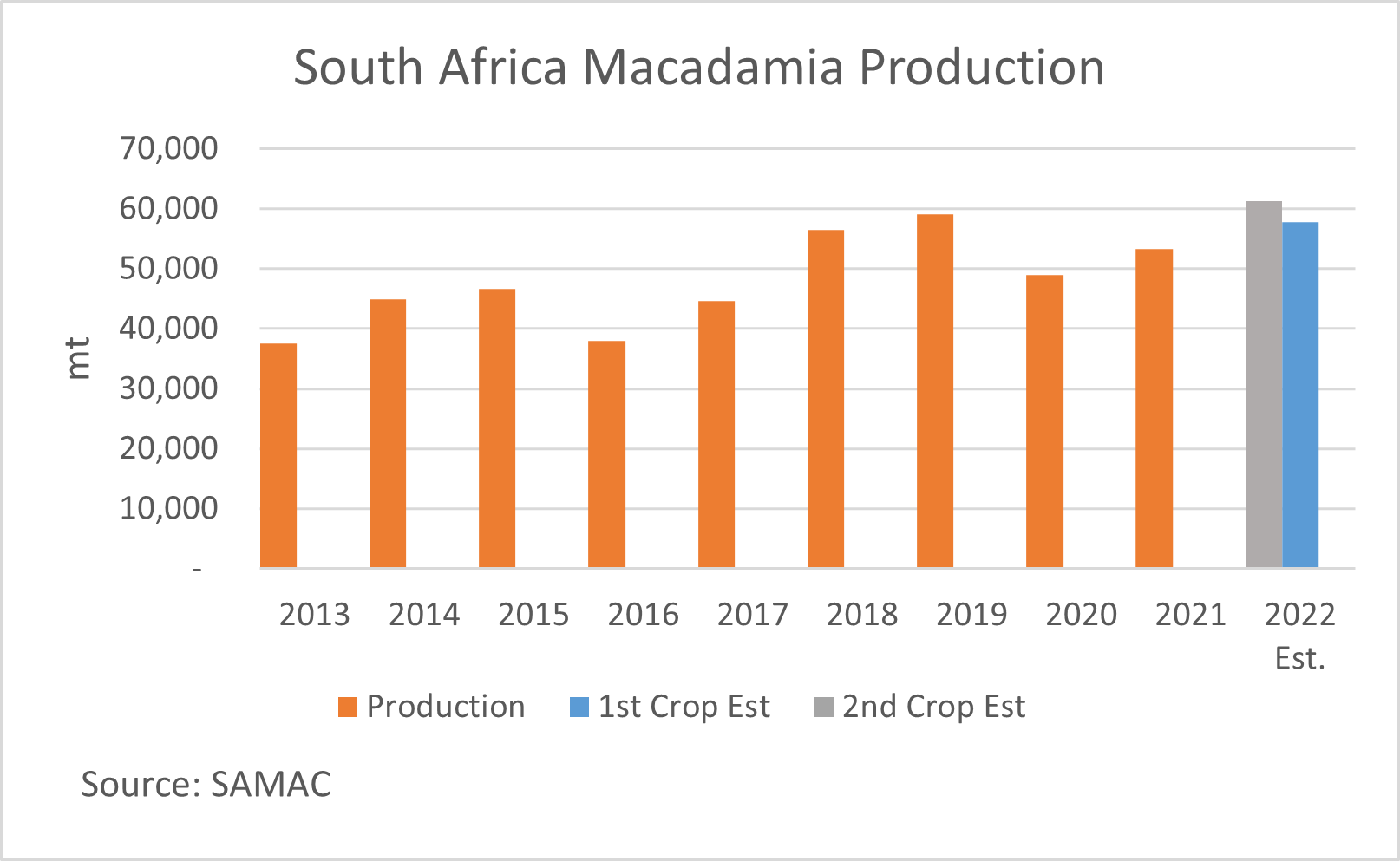Record Production Estimate for South African Macadamias Blemished by Slow Demand from China and Pest Problems

South Africa, the world’s largest macadamia producer, could harvest a record 61,288 mt crop, according to Macadamias South Africa’s (SAMAC) latest crop estimate. This is 3,565 mt higher than the first crop estimate of the season, made in March. It is also 7,968 mt more than the 2021 crop, thanks to favorable weather and an ever-increasing area under macadamias.

La Nina Brings Ample Rainfall
South Africa experienced a multi-year drought that only ended in the latter half of last year. Most macadamia plantations are irrigated, but water restrictions and hot and dry weather still affected the 2021 crop.
For the 2022 crop, the harvest is well underway and good yields are reported as the crop comes in. The La Nina weather phenomenon has brought plenty of rain since late last year to the eastern areas of South Africa, where most of the country’s nuts are grown. More than 90% of macadamia production occurs in the three provinces of Kwazulu-Natal, Mpumalanga, and Limpopo. In virtually all growing regions in these provinces, rainfall from July 2021 until April 2022 exceeded 1,000 mm, and was well above the yearly averages.
The area under macadamias is also increasing rapidly and SAMAC estimates an additional 5,351 ha were planted in 2020, and 6,235 ha in 2021. In total, the area under macadamias is estimated at 56,368 ha, but trees have not yet reached mature production in many areas. More than half of the total area is under trees less than 10 years old, and have not yet reached mature outputs.
Waning Demand from China
While increased production is good news for the South African macadamia industry, there are plenty of hurdles to overcome. On a value basis, China and Hong Kong have a market share of nearly 30% in South Africa’s macadamia exports. China ordered fresh lockdowns amid rising Covid-19 cases. This has reduced demands for imports and further disrupted the already chaotic logistics, complicating deliveries to China. South Africa's macadamia exports are also suffering as a result. Official export figures from South Africa are only available until March, so it is too early to assess the full impact of China’s reduced demand. However, exports to China could drop lower than last year's levels during the main export season which started in May. Exporters will be looking towards other destinations, especially the US, to make up for any losses to China.
Pest Control Considerations
Another big worry for the industry is the widespread prevalence of pests. Nut borers, stink bugs and Tortricidae moths are well-known pests, but the emergence of two others will be of great concern. The shot hole borer, which arrived in South Africa in 2012, could cause major damage to macadamia plantations. According to a recent Bloomberg article, the infestation could cost South Africa an estimated USD 18.5 billion of damage to both urban trees and crop trees, including macadamia, citrus, avocado, and lumber plantations.
Macadamia felted coccid is yet another pest that arrived in South Africa in 2017 and could cause significant damage to trees and make them susceptible to other pests and diseases. SAMAC has provided control measures for dealing with macadamia felted coccid.



